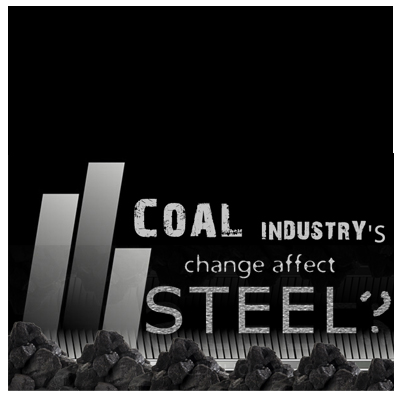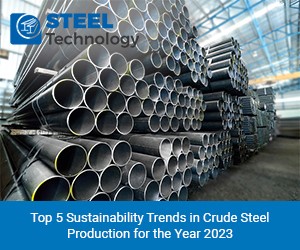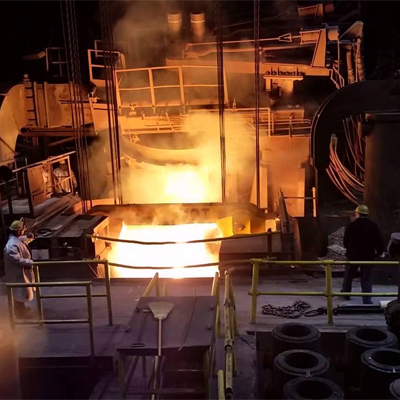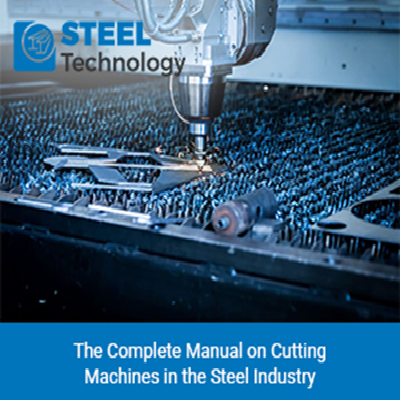Innovations in Strip Processing for Steel Industry Advancements
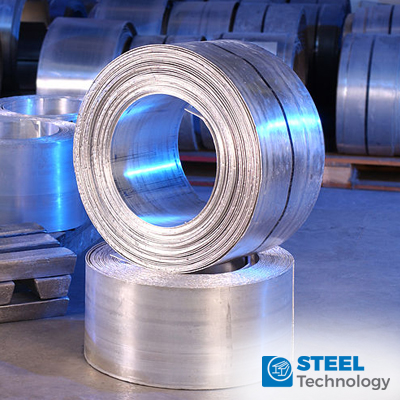
The steel industry is one of the cornerstones of modern manufacturing, providing essential materials for infrastructure, transportation, machinery, and countless other applications. Within this vast industry, strip processing plays a crucial role in transforming raw steel into usable, high-quality products. In recent years, significant innovations in strip processing technologies have driven advancements in efficiency, quality, and sustainability. This article explores these innovations and their impact on the steel industry.
I. Introduction to Strip Processing
Strip processing is a series of manufacturing processes that involve the shaping, forming, and finishing of steel strips. These strips, typically thin and wide, are used to create various steel products such as sheets, coils, tubes, and automotive components. Strip processing encompasses a range of techniques, including hot rolling, cold rolling, annealing, pickling, and coating.
Hot Rolling: This process involves heating the steel above its recrystallization temperature and passing it through a series of rollers to reduce its thickness and shape it into a desired profile.
Cold Rolling: After hot rolling, steel strips may undergo cold rolling to further reduce thickness, improve surface finish, and enhance mechanical properties.
Annealing: Annealing is a heat treatment process that relieves internal stresses, softens the steel, and improves its ductility and machinability.
Pickling: Pickling involves removing impurities, oxides, and scale from the steel surface using acids, typically hydrochloric acid or sulfuric acid, to prepare it for subsequent processing or coating.
Coating: Coating processes such as galvanizing or applying organic coatings protect steel strips from corrosion and enhance their aesthetic appeal.
II. Advancements in Hot Rolling Technologies
Hot rolling is a fundamental step in strip processing, shaping steel ingots or slabs into thinner strips. Recent innovations in hot rolling technologies have focused on improving process efficiency, product quality, and environmental sustainability.
Innovations in strip processing technologies have revolutionized the steel industry, particularly in thin-slab casting and rolling, high-speed rolling mills, flexible rolling strategies, and advanced heat treatment. Thin-slab casting and rolling merge casting and rolling into a continuous operation, slashing energy usage, eradicating intermediate storage, and yielding thinner strips with enhanced properties. Modern high-speed rolling mills, employing automation and precision controls, achieve higher throughput rates without compromising tolerances or surface quality. Flexible rolling strategies, such as variable roll gap control and adaptive cooling, enable mills to optimize parameters based on strip properties, reducing waste and ensuring product consistency. Integrated heat treatment systems within rolling mills provide precise control over strip properties like hardness, strength, and microstructure, delivering tailored solutions for specific applications.
These advancements collectively drive efficiency, quality, and customization in strip processing for the steel industry.
III. Cold Rolling Innovations and Surface Quality Enhancement
Cold rolling plays a vital role in refining the thickness, surface finish, and mechanical properties of steel strips. Innovations in cold rolling technologies have focused on achieving finer gauge tolerances, enhancing surface quality, and reducing material waste.
Recent advancements in strip processing technologies have brought about significant improvements in cold rolling processes. High-performance rolling stands, equipped with enhanced roll materials, surface coatings, and lubrication systems, facilitate higher reductions per pass, resulting in thinner gauge strips with superior surface finish. Precision grinding and polishing techniques have also evolved, enhancing the surface smoothness and flatness of cold-rolled strips to meet the demanding requirements of automotive and aerospace applications. Moreover, the integration of shape control technologies such as roll bending and shifting has become instrumental in correcting strip profile deviations during cold rolling, ensuring dimensional accuracy and uniform thickness distribution. Additionally, innovative surface treatment processes like shot blasting, chemical etching, and electroplating have emerged, enhancing surface cleanliness, adhesion, and corrosion resistance of cold-rolled steel, further bolstering its suitability for a wide range of industrial applications.
These advancements collectively contribute to enhanced quality, precision, and versatility in cold strip processing for the steel industry.
IV. Annealing and Heat Treatment Advancements
Annealing and heat treatment processes are critical for optimizing the mechanical properties, microstructure, and formability of steel strips. Recent advancements in annealing technologies have focused on energy efficiency, rapid processing cycles, and precise temperature control.
Continuous annealing lines have emerged as a cornerstone of modern strip processing, integrating heating, soaking, and cooling stages seamlessly in a continuous operation. This approach not only minimizes energy consumption but also reduces cycle times, enhancing overall productivity while improving strip properties. Infrared heating systems have also revolutionized annealing processes by providing uniform and rapid heating of steel strips, leading to shorter annealing cycles, improved grain structure, and significant energy savings compared to traditional furnace heating methods.
Vacuum annealing processes have gained prominence for their ability to eliminate oxidation and decarburization of steel surfaces, resulting in clean, scale-free strips with superior surface quality and dimensional stability. Furthermore, advanced heat treatment control systems, including rapid quenching and controlled cooling rates, offer precise manipulation of steel microstructures, allowing manufacturers to achieve desired mechanical properties and performance characteristics tailored to specific applications.
These innovations in annealing technology collectively contribute to enhanced efficiency, quality, and control in strip processing for the steel industry, driving continuous improvements in product performance and customer satisfaction.
V. Environmental Sustainability and Resource Efficiency
In addition to technological advancements, the steel industry is increasingly focused on environmental sustainability, resource efficiency, and carbon footprint reduction. Innovations in strip processing technologies align with these goals through various initiatives.
The steel industry is increasingly embracing sustainability initiatives, with a focus on recycling, energy efficiency, water management, and lifecycle assessments to minimize environmental impact.
Integrated recycling loops and closed-loop manufacturing systems are key strategies that reduce waste generation, conserve resources, and promote circular economy principles within the steel industry, fostering a more sustainable approach to production. Energy-efficient processes, including the adoption of energy-efficient equipment, waste heat recovery systems, and renewable energy sources, play a crucial role in minimizing greenhouse gas emissions and lowering the overall environmental footprint of strip processing operations. Advanced water treatment technologies, zero liquid discharge systems, and waste valorization processes address water scarcity concerns and mitigate environmental risks associated with steel production, ensuring responsible water and waste management practices.
Additionally, comprehensive lifecycle assessments and environmental impact studies guide continuous improvement efforts, identify areas for optimization, and drive sustainable practices across the entire value chain of steel strip processing, promoting long-term environmental stewardship and sustainable growth in the industry.
VI. Digitalization and Industry 4.0 Integration
The digital transformation and Industry 4.0 initiatives have revolutionized the steel industry, introducing smart technologies, data analytics, and automation solutions to optimize processes, enhance decision-making, and drive operational excellence in strip processing.
The integration of smart sensors, Internet of Things (IoT) devices, and real-time monitoring systems in strip processing has ushered in a new era of data-driven insights and operational efficiency.
These technologies enable predictive maintenance, proactive quality control, and real-time monitoring throughout the strip processing workflow, enhancing overall productivity and performance. Advanced data analytics platforms leverage machine learning algorithms, predictive models, and historical data to optimize process parameters, identify production trends, and improve overall equipment effectiveness (OEE), ensuring continuous improvement and operational excellence. Digital twin technologies further enhance efficiency by creating virtual replicas of strip processing equipment and production lines, allowing for simulation-based optimization, scenario analysis, and rapid prototyping of process improvements, leading to faster innovation cycles and enhanced decision-making.
Moreover, the integration of robotics, automated guided vehicles (AGVs), and autonomous systems streamlines material handling, reduces manual labor, and enhances safety in strip processing facilities, creating a more efficient and sustainable production environment.
VII. Challenges and Future Outlook
Despite the significant advancements in strip processing technologies, several challenges and opportunities lie ahead for the steel industry:
Compliance with stringent environmental regulations, carbon neutrality targets, and sustainability mandates is a paramount concern for the steel industry, driving ongoing investment in clean technologies and emissions reduction strategies. Building resilient supply chains, optimizing logistics, and mitigating supply chain disruptions through digitalization and data-driven supply chain management practices are essential for industry resilience and competitiveness. The exploration of advanced materials, alloy development, and nanostructuring techniques presents new opportunities for lightweight, high-strength steel products with improved performance characteristics, aligning with market demands for sustainable and innovative solutions. Adapting to evolving market dynamics, geopolitical factors, trade policies, and customer preferences requires agile production systems, market intelligence, and strategic partnerships across the steel value chain to ensure responsiveness and competitiveness. Additionally, investing in workforce training, upskilling programs, and talent retention initiatives fosters innovation, creativity, and knowledge transfer within the steel industry workforce, driving continuous improvement and excellence in operations and product development.
Looking ahead, continued collaboration between industry stakeholders, research institutions, and government agencies will drive the next wave of innovations in strip processing, shaping the future of the steel industry and its contributions to sustainable development, economic growth, and technological advancement.
Conclusion
Innovations in strip processing technologies have propelled the steel industry forward, enhancing productivity, quality, and sustainability across the value chain. From hot rolling advancements to cold rolling innovations, heat treatment optimizations, digitalization, and environmental stewardship, the steel industry continues to evolve and adapt to meet the challenges and opportunities of a rapidly changing global landscape. Embracing these innovations, addressing challenges, and fostering a culture of continuous improvement will define the future success of strip processing in the steel industry.





